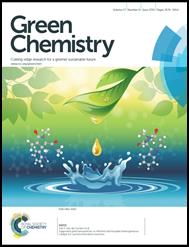Held on February 9th-10th, 2016, the University of Nottingham organised its first Green and Sustainable Chemistry Workshop. Held at the Breadsall Priory Hotel, located in Derbyshire, UK, the two day workshop offered a unique opportunity for scientific discussion around Green and Sustainable Chemistry. Bringing students from the Centres for Doctoral Training from Nottingham, Bath, Bristol and Cardiff, together with established academics from across the field, the workshop aimed to showcase the challenges that face Green Chemistry in the years to come, and offer open discussion around how such issues should be tackled. More importantly the true focus of the workshop lay towards the establishing of discourse and networking between the new generation of researchers combined with unparalleled access to a wide array of disciplines and experience offered by the workshop participants.
The first day of the workshop began with a philosophical viewpoint from Professor Paul Anastas (Yale University), the father of Green Chemistry. Offering an impassioned and motivating talk pointing to numerous examples of successful Green Chemistry technologies, Professor Anastas challenged the workshop participants to “be the crazy ones” and strive to produce innovative research and technologies to change the world. Stressing the importance of Green Chemistry for the future, his stimulating presentation fuelled exciting discussion, not just for the post-presentation questions, but well into the evening.
The rest of the day saw presentations by both Professor Chris Moody (University of Nottingham) and Professor Chao-Jun Li (McGill University). Putting words into practice, both talks highlighted innovative and exciting research within the realms of Green Chemistry. Professor Moody presented work revolving around the development of solar photochemistry processes, and how harnessing the power of the world around us can be a valuable tool for Green Chemistry research. Following on from this, Professor Li outlined his research towards the development of Green Chemistry for Chemical Synthesis. Showcasing several pioneering techniques developed within his research group, his presentation displayed the success that can be achieved by challenging conventional techniques and striving for innovation.
The first day of the workshop was wrapped up by a post-dinner talk from Prof. Sir Martyn Poliakoff (University of Nottingham). Continuing the theme of the future of Green Chemistry, Sir Martyn Poliakoff gave an inspiring speech about the future of Green Chemistry and how it lay at the feet of the young researchers participating within the workshop to carry on to design the next generation of green research and technologies.
The second day of the workshop began with a presentation by Dr. Andrew Marr (Queen’s University Belfast) discussing the advantages and disadvantages of different types of catalysts. Continuing with the ideals innovation, Dr. Marr presented research aimed towards the combination of different types of catalysts to harness the advantages of them all. Bringing together materials, biotechnology and chemical catalysis he focused on the development of green and sustainable processes using such techniques.
Following this, the conference was rounded off with more inspiring presentations by Professor Jairton Dupont (University of Nottingham) and Professor Walter Leitner (RWTH Aachen). Professor Dupont, whose research focuses on the use of ionic liquids, showcased their use within the realms of Green and Sustainable Chemistry, offering an informed perspective into how research in this area can drive countless improvements. Wrapping up the final day of talks, Professor Leitner presented his perspective on the development of alternative energy and fuels, weaving in his own research to provide a valuable insight into a key issue for Green Chemistry in the years to come. An inspirational end to the workshop, Professor Leitner’s talk left many participants with much to discuss during the end of workshop lunch.
Overall the Green and Sustainable Chemistry Workshop offered much to all those that attended. Although many stimulating presentations were given, the true success was seen in the bringing together of students from multiple universities with academics at the top of their fields. Working as a platform to encourage ideas, networking and discussion between researchers at the beginning of their careers and those at the forefront of Green Chemistry innovation, the workshop has undoubtedly cultivated future collaborations and countless new ideas. More importantly, it has worked to inspire a new generation of researchers to push the boundaries of Green Chemistry to their limits and beyond.
Thomas Clarke is a PhD Researcher in the EPSRC CDT in Sustainable Chemistry at the University of Nottingham.
Comments Off on 1st Green and Sustainable Chemistry Workshop

















